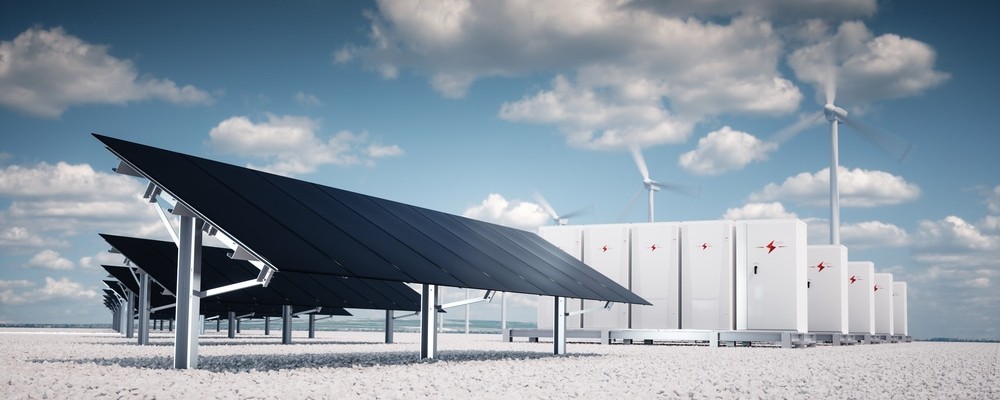Commercial Energy Storage Solutions: A Complete Guide for Businesses
Introduction
Businesses today face a wide range of energy challenges: rising electricity prices, frequent power outages, and the need to integrate renewable energy sources into their operations. For commercial and industrial users, energy storage has quickly become more than a supporting technology—it is now a critical tool for cost savings, operational reliability, and sustainability goals.
This article explores the different types of commercial energy storage solutions, their key applications, and how businesses can choose the right technology to maximize return on investment.
What Are Commercial Energy Storage Solutions?
Commercial energy storage solutions refer to systems designed to store electricity for use in commercial or industrial settings. Unlike residential storage, which is typically small-scale, or utility-scale projects serving the grid, commercial systems are sized to meet the specific needs of businesses such as office buildings, factories, hospitals, and shopping centers.
The functions of these systems generally include:
- Peak shaving and load shifting to reduce electricity bills
- Backup power during outages
- Renewable integration with solar or wind power
- Improving power quality and ensuring critical equipment stability
Key Types of Commercial Energy Storage Systems
- On-grid solutions
These systems connect directly to the utility grid. Their main value lies in peak shaving, demand response, and renewable energy smoothing. For example, a shopping mall may use on-grid storage to shift energy use from expensive peak hours to cheaper off-peak hours.
- Advantages: Strong economic returns, grid interaction opportunities
- Limitations: Dependent on local electricity tariffs and regulations
- Off-grid solutions
Off-grid systems operate independently of the utility grid, often paired with local generation sources such as solar panels or diesel generators. They are essential in remote areas, mining sites, and island resorts.
- Advantages: Complete energy independence, reliable power supply
- Limitations: Higher upfront investment, requires careful system design
- Hybrid / Microgrid solutions
Hybrid systems combine on-grid and off-grid functionality. They can operate independently when the grid fails and switch seamlessly when the grid is available.
- Advantages: Best of both worlds—cost savings plus reliability
- Typical users: Data centers, hospitals, and industrial parks
Technology Options: Comparing Different Battery Types
Lead-acid
- Pros: Low upfront cost, mature technology
- Cons: Short lifespan, frequent maintenance, bulky design
Flow batteries
- Pros: Very long cycle life, suitable for large-scale storage
- Cons: Low energy density, high installation cost, limited commercial adoption
Sodium-ion
- Pros: Emerging alternative with potential for low-cost storage
- Cons: Still in development, limited availability in commercial systems
Lithium-ion (Mainstream choice)
- Pros: High energy density, long cycle life, fast charging, 90%+ round-trip efficiency
- Cons: Higher upfront cost than lead-acid, but costs are steadily declining
- Why it matters: Today, lithium-ion dominates commercial energy storage, accounting for the majority of new installations worldwide. Its balance of performance, scalability, and economics makes it the go-to choice for businesses.
Applications of Commercial Energy Storage Solutions
- Cost Savings – Peak Shaving & Load Shifting
One of the most common applications is peak shaving and load shifting, where energy is stored during off-peak hours and discharged during high-demand periods. This allows businesses to significantly reduce energy bills, particularly in regions with large peak-to-valley price differences.
For a more detailed breakdown of how peak shaving strategies work and why they are critical for businesses, you can read our in-depth guide here.
- Backup Power
Hospitals, data centers, and critical facilities cannot afford downtime. Commercial storage provides reliable backup power, often paired with UPS systems, ensuring uninterrupted operations.
- Renewable Integration
As more companies install rooftop solar or local wind systems, storage helps smooth output and maximize self-consumption. This not only reduces reliance on the grid but also supports corporate sustainability initiatives.
- Grid Services
Some commercial systems participate in demand response and ancillary services, such as frequency regulation, earning additional revenue streams by supporting the grid.
Business Value and ROI Analysis
Investing in commercial energy storage goes beyond reducing electricity bills. Its value can be measured across three dimensions:
- Economic: Lower energy bills, reduced diesel generator use, new revenue from grid services
- Operational: Greater resilience against outages, improved power quality for sensitive equipment
- Strategic: Meeting ESG and carbon reduction targets, enhancing corporate reputation
With proper design and integration, many businesses see payback periods of 4–7 years, depending on local electricity pricing and incentives.
How to Choose the Right Solution
Step 1: Define the primary goal
Clarify whether the system is intended mainly for cost savings, backup power, renewable integration, or a combination.
Step 2: Select the grid connection mode
Choose between on-grid, off-grid, or hybrid systems depending on site conditions and reliability needs.
Step 3: Compare battery technologies
Evaluate different chemistries based on lifetime cost, efficiency, and maintenance requirements.
Step 4: Evaluate supplier & system design
Beyond choosing the right battery chemistry, businesses must also consider system design. Installation environments play a major role in long-term performance. For example, outdoor deployments often require robust cooling and weather-resistant enclosures. Solutions such as outdoor cabinet air cooling energy storage systems are tailored to these scenarios, ensuring durability and efficiency even under challenging environmental conditions.
Future Trends in Commercial Energy Storage
- Digitalization and AI – Smarter Energy Management Systems (EMS) for real-time optimization
- Virtual Power Plants (VPPs) – Aggregating distributed commercial storage into flexible grid resources
- Policy Incentives – Tax credits and government subsidies in regions like the U.S. and Europe driving adoption
- Sustainability Focus – Lithium-ion recycling and second-life battery projects shaping the next decade
Conclusion
Commercial energy storage solutions are becoming a cornerstone of modern business operations, enabling companies to cut costs, ensure reliability, and integrate renewable energy sources.
By understanding the differences between on-grid, off-grid, and hybrid systems—and comparing available battery technologies—businesses can make informed decisions tailored to their specific needs. Among these options, lithium-based solutions stand out for their strong balance of performance, cost-effectiveness, and scalability, making them the leading choice for today and the future.


